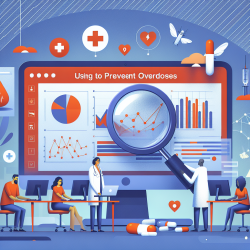The recent study titled "Intake of sugar sweetened beverages among children and adolescents in 185 countries between 1990 and 2018: population based study" provides critical insights that can be instrumental for practitioners working with children and adolescents. The findings indicate a significant increase in the intake of sugar-sweetened beverages (SSBs) among young people globally, highlighting a parallel rise in obesity rates. This blog post will explore how practitioners can utilize these findings to enhance their skills and encourage further research.
Key Findings of the Study
The study, conducted by Lara-Castor et al., offers a comprehensive analysis of SSB intake among children and adolescents aged 3-19 years across 185 countries. Here are some key takeaways:
- Global SSB intake among children and adolescents increased by 23% from 1990 to 2018.
- In 2018, the mean global intake was 3.6 servings per week, with significant regional variations.
- Higher intakes were observed in older children, urban residents, and those with parents having higher education levels.
- Latin America and the Caribbean had the highest intake, while South Asia had the lowest.
Implications for Practitioners
Understanding these findings can help practitioners in several ways:
1. Tailored Interventions
The data reveals substantial regional and demographic variations in SSB intake. Practitioners can use this information to tailor interventions that are culturally and contextually relevant. For instance, interventions in Latin America may need to focus more on reducing SSB consumption compared to South Asia.
2. Education and Awareness
The correlation between parental education and SSB intake suggests that educating parents about the health risks associated with high SSB consumption can be an effective strategy. Practitioners can organize workshops and distribute educational materials to raise awareness among parents and caregivers.
3. Policy Advocacy
The study underscores the need for policies aimed at reducing SSB intake among children and adolescents. Practitioners can advocate for school-based interventions, such as banning the sale of SSBs in school canteens and promoting healthier beverage options.
Encouraging Further Research
While the study provides a robust foundation, there are areas that warrant further investigation. Practitioners can play a pivotal role in encouraging and participating in research initiatives. Here are some suggested areas for further research:
1. Longitudinal Studies
Conducting longitudinal studies can help in understanding the long-term impact of SSB intake on children's health, particularly in relation to obesity and chronic diseases.
2. Intervention Effectiveness
Researching the effectiveness of various interventions can provide valuable insights into what works best in different contexts. This can include school-based programs, community initiatives, and policy changes.
3. Socioeconomic Factors
Exploring the role of socioeconomic factors in SSB consumption can help in designing more targeted and effective interventions. Understanding how income, education, and urbanization influence SSB intake can provide a more nuanced approach to tackling the issue.
Conclusion
The study by Lara-Castor et al. offers invaluable insights that can help practitioners enhance their skills and contribute to better health outcomes for children and adolescents. By tailoring interventions, raising awareness, and advocating for policy changes, practitioners can make a significant impact. Moreover, encouraging further research can help in developing more effective strategies to reduce SSB intake and combat obesity.To read the original research paper, please follow this link:
Intake of sugar sweetened beverages among children and adolescents in 185 countries between 1990 and 2018: population based study.










